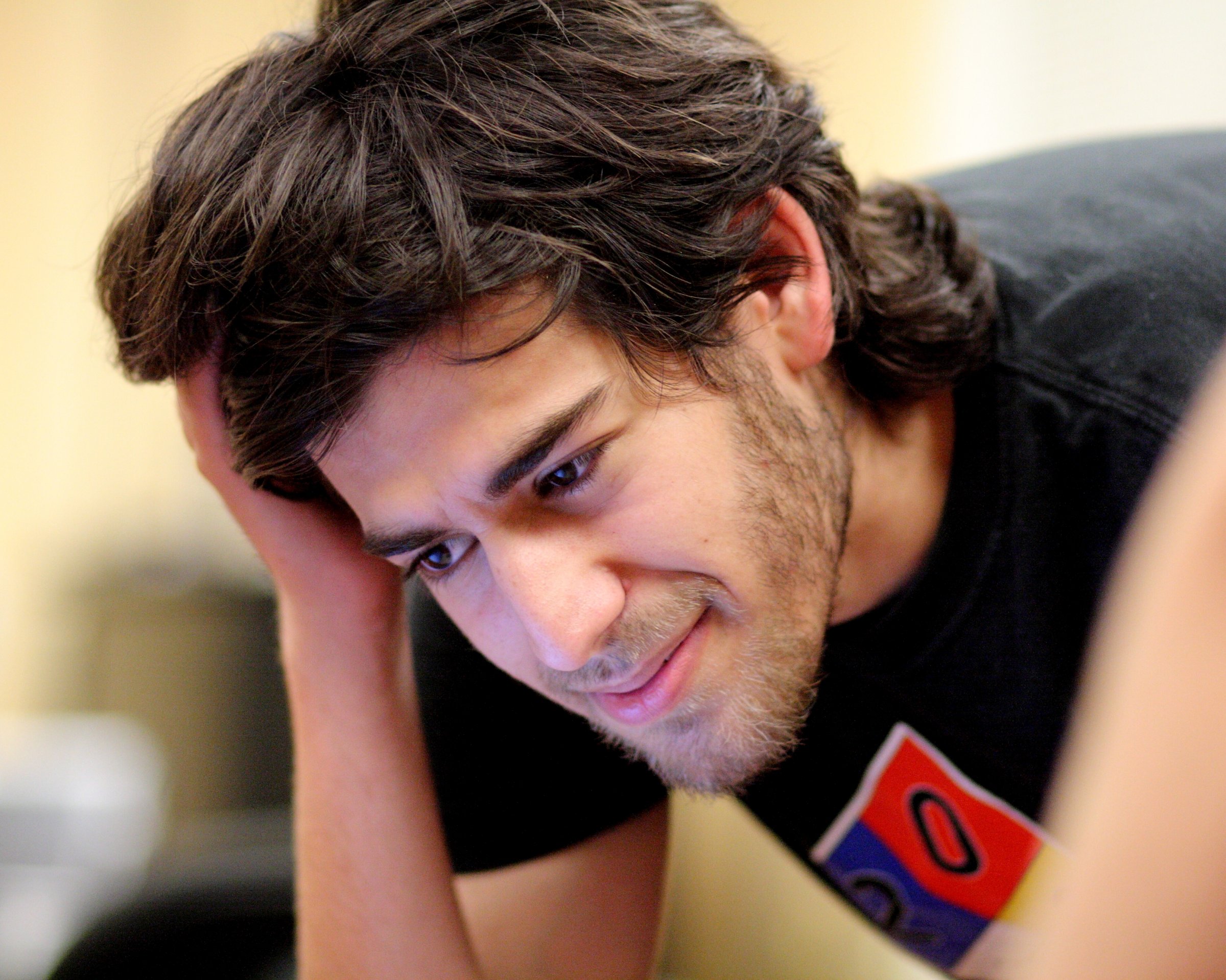
The Internet’s Own Boy is a new documentary out Friday with a controversial premise: It theorizes that laws designed to protect us online — and those who pen, pass and implement them — are not only failing to keep us safe, but they may have the power to kill. The film posits that such failings contributed to the suicide of activist Aaron Swartz in January of last year, when he was just 26 years old.
Swartz suffered from debilitating ulcerative colitis — a bowel condition — as well as crippling depression. His depression only worsened as he and his family spent millions defending against felony charges and a steep prison sentence he faced for downloading millions of academic articles via The Massachusetts Institute of Technology’s computer labs. Swartz’s family called the incident “an alleged crime that had no victims.”
The film reinforces what The New Yorker’s Larissa Macfarquhar, in her engrossing profile of Swartz, calls the family’s message that Swartz was “murdered by the government.” Macfarquhar says that the family deployed that idea in the aftermath of Swartz’s suicide to “direct public sadness and anger to political purposes,” though she writes that while the family doesn’t believe this, they have publicly stuck to it.
In any other era, finding enough footage and photos of someone who lived such a short life would be challenging, but Swartz lived online from the start—it was the space he preferred most. The film is rich with visuals documenting his existence, rendering him sympathetic and lovable to those who never met him.
Swartz helped developed and later sold Reddit, then pioneered political activism organizations that worked to fight the anti-piracy Stop Online Piracy Act (SOPA) as well as catalyze Elizabeth Warren’s Senate bid. He harbored political aspirations, and the film suggests he could have been among the first politicians to understand the Internet well enough to keep us from censoring it or destroying ourselves with it. Swartz’s capacity for kindness and idealism inverts the stereotype of the tortured coder. He accomplished more in a couple of decades than most people hope to in a lifetime.
This flattering portrait of Swartz sets up one of the film’s major takeaways that hews to the family’s message—that bullying, overreaching prosecutors pursing too harsh a sentence, coupled with a silent university, bear responsibility for Swartz taking his own life. The film derives its title from this idea.
“He was the Internet’s own boy, and the old world killed him,” says Swartz’s former partner, Quinn Norton. It’s a galvanizing theory, but it’s also dangerous for viewers or admirers of Swartz to believe this to be the only reason for his death. It’s too simplistic, too rote. The film would be even more dynamic and challenging if it had questioned this hypothesis.
While the harassment by the justice system seems unjust and even abusive, Swartz’s death should not only compel us to question our law enforcers and lawmakers, but should encourage us to examine the blight of suicide more closely. We otherwise run the risk of settling for what famed Nigerian writer Chimamanda Ngozi Adichie calls a single story — one that’s flat and dimensionless because it’s the only one we hear.
Suicide is an epidemic; one million adults attempted suicide and more than two million planned to attempt suicide in 2012, according to the most recent Centers for Disease Control and Prevention data. Men account for nearly 80% of these deaths. Someone leaps from the Golden Gate Bridge approximately every two weeks. Alcohol, opiates (including painkillers) and access to guns are all known risk factors for suicides, which comprise two-thirds of all gun deaths. No two suicides are alike, and yet every individual who takes his or her own life has something in common.
Suicide is increasingly reported in the news, particularly when the victim is young and there is bullying is involved. Bart Palosz, Rebecca Sedwick, Karyn Washington and Cora Delille all took their own lives in the last year and a half since Swartz’s death and were the subject of news stories. Discussion of blame is common—who’s at fault for such overwhelming pain, such unexplained horror. Families often blame themselves, according to research from Nassau Community College. In the cases of Phoebe Prince and Rebecca Sedwick, law enforcement initially fingered and pursued prosecuting high school bullies. But blame, while a natural inclination, can rupture a community, as it did in the cases of Prince and Sedwick, and ruin even more lives in its wake.
Swartz’s internal struggle in the months leading to his death, recounted by friends and family in the film, is tragic. They said he was “terrified” and became increasingly “isolated from friends and family.”
“He didn’t want to be a burden to people,” said partner Taren Stinebrickner-Kauffman.
While Swartz’s death may very well be explained in part by “the product of a criminal justice system rife with intimidation and prosecutorial overreach,” as his family said in a statement released after his death, butit’s dangerous to only frame the tragedy that way because while it starts an important discussion about preserving our liberties as Americans, it halts another valuable one about suicide, its myths and hard truths and how we might help keep each other and those we love safe.
Yarrow is a TIME contributing writer and journalist living in Brooklyn.
More Must-Reads from TIME
- Cybersecurity Experts Are Sounding the Alarm on DOGE
- Meet the 2025 Women of the Year
- The Harsh Truth About Disability Inclusion
- Why Do More Young Adults Have Cancer?
- Colman Domingo Leads With Radical Love
- How to Get Better at Doing Things Alone
- Michelle Zauner Stares Down the Darkness
Contact us at letters@time.com